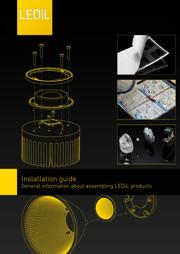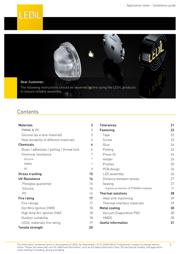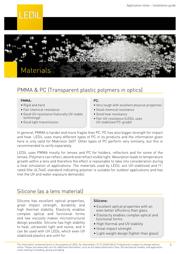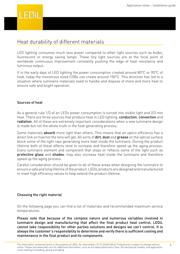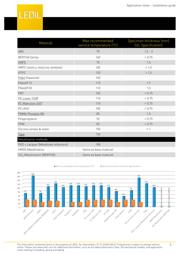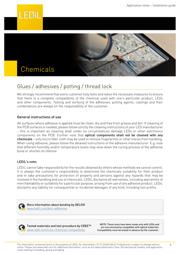Datasheet 搜索 > LED配件 > Ledil > C10366_PLATINUMROCKET-3-SS 数据手册 > C10366_PLATINUMROCKET-3-SS 产品设计参考手册 4/31 页
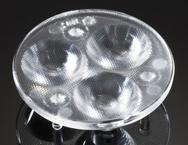
¥ 30.33
C10366_PLATINUMROCKET-3-SS 产品设计参考手册 - Ledil
制造商:
Ledil
分类:
LED配件
描述:
LEDiL MARTHA Series LED LensesThe MARTHA series from LEDiL, are a family of round LED lenses with a diameter of 50 mm. These multi-lens arrays are designed for use with three LEDs. They have a clear or diffused lens and offer a range of beam types from a spot to wide angle. MARTHA lenses direct the light from an LED light source through the lens to achieve the desired beam emission type with a uniform output. Made using an optical grade PMMA, the MARTHA lenses offer a high UV and temperature resistance. They fasten into place using positioning pins and glue. MARTHA lenses have been designed and optimised for use with a variety of LEDs. Due to the rapidly changing nature of LED products customers are strongly advised to consult the latest manufacturer data for compatible LEDs. ### 注The viewing angle produced (the full angle measured at the half peak luminous intensity value) will vary depending on the chip size, colour and position of the LED. ### LEDiL 多 LED 透镜展开
Pictures:
3D模型
符号图
焊盘图
引脚图
产品图
C10366_PLATINUMROCKET-3-SS数据手册
Page:
of 31 Go
若手册格式错乱,请下载阅览PDF原文件

Application notes – Installation guide
The information contained herein is the property of LEDiL Oy, Salorankatu 10, FI-24240 SALO, Finland and is subject to change without
notice. Please visit www.ledil.com for additional information, such as the latest photometric files, 3D mechanical models, and application
notes relating to handling, gluing and taping.
4
Heat durability of different materials
Sources of heat
Choosing the right material
LED lighting consumes much less power compared to other light sources such as bulbs,
fluorescent or energy saving lamps. These tiny light sources are at the focal point of
worldwide continuous improvement constantly pushing the edge of heat resistance and
luminous output.
If in the early days of LED lighting the power consumption created around 80°C or 90°C of
heat, today the monstrous sized COBs can create around 150°C. This direction has led to a
situation where luminaire materials need to handle and dispose of more and more heat to
ensure safe and bright operation.
As a general rule 1/3 of an LEDs power consumption is turned into visible light and 2/3 into
heat. There are three sources that produce heat in LED lighting: conduction, convection and
radiation. All of these are extremely important considerations when a new luminaire design
is made but not the whole truth in the heat generating process.
Some materials absorb more light than others. This means that an optics efficiency has a
direct link on how hot the lens will get. All sorts of dirt, dust and grease on the optical surface
block some of the light rays generating more heat inside the luminaire. During the product
lifetime both of these effects tend to increase and therefore speed up the aging process.
Every luminaire element and component that stops or reflects some of the light such as
protective glass and shades, may also increase heat inside the luminaire and therefore
speed up the aging process.
Careful consideration should be given to all of these areas when designing the luminaire to
ensure a safe and long lifetime of the product. LEDiL products are designed and manufactured
to meet high efficiency values to help extend the product lifetime.
On the following page you can find a list of materials and recommended maximum service
temperatures.
Please note that because of the complex nature and numerous variables involved in
luminaire design and manufacturing that affect the final product heat control, LEDiL
cannot take responsibility for other parties solutions and designs we can’t control. It is
always the customer’s responsibility to determine and verify there is sufficient cooling and
maintenance in the final product and its components.
器件 Datasheet 文档搜索
AiEMA 数据库涵盖高达 72,405,303 个元件的数据手册,每天更新 5,000 多个 PDF 文件

